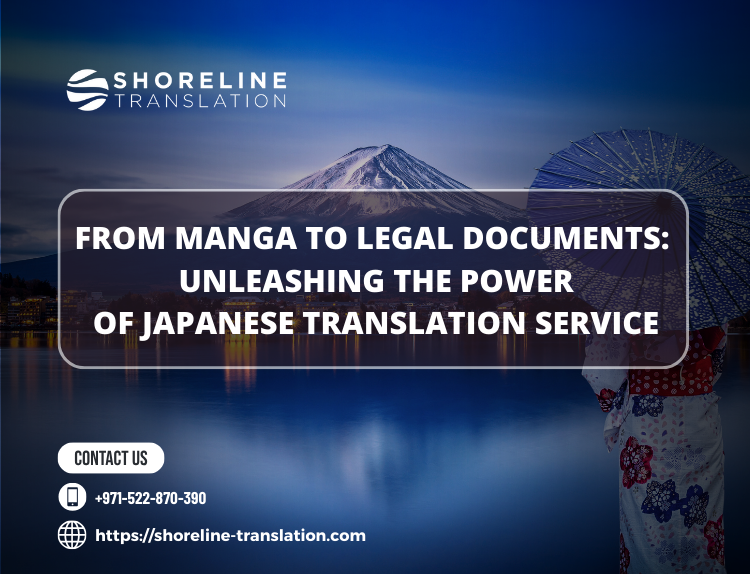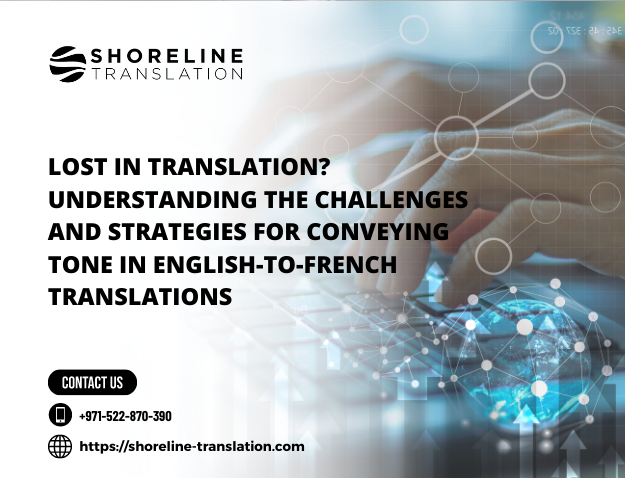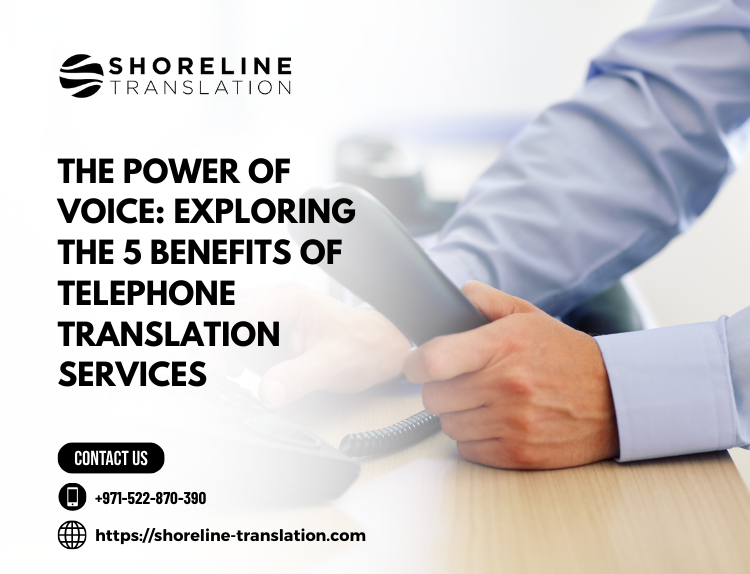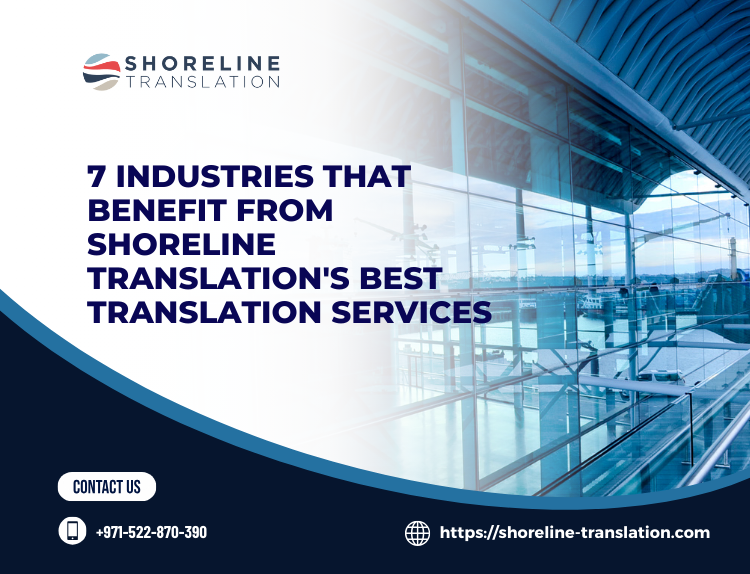Table of Contents
ToggleThe Ultimate Checklist for Court Submissions: How to Translate PDF Arabic to English Legal Documents
Legal translations are a critical cog in the machinery of international law, immigration, and global business. When dealing with Arabic-speaking countries or clients, the need to accurately and professionally translate PDF Arabic to English becomes paramount, especially for court submissions.
Whether you’re a law firm, a corporate entity, or an individual preparing legal documents for international jurisdictions, ensuring your translations are certified, accurate, and court-ready is non-negotiable.
In this comprehensive guide, we’ll walk you through the ultimate checklist for submitting translated legal documents to courts, focusing on how to translate Arabic PDFs into English with precision and legality. We’ll also highlight the role of Shoreline, a leading translation company, in providing top-tier certified translation services.
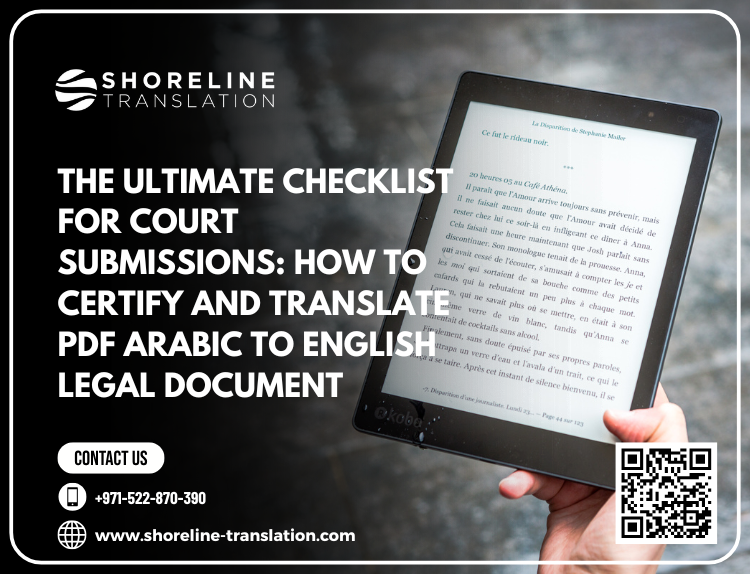
Why Legal Translation Accuracy Matters
Legal documents are not just words on paper; they carry binding implications. A single mistranslation can result in:
- Legal misinterpretations
- Delays in court proceedings
- Financial penalties
- Rejection of submissions
This is why courts often require certified legal translations, especially when dealing with documents in languages like Arabic, where cultural and linguistic nuances are complex.
What Does It Mean to Translate PDF Arabic to English for Legal Use?
Translating a PDF from Arabic to English for court use involves more than just converting words. It requires:
- Preserving the original format of the document
- Ensuring legal terminology is accurately translated
- Certifying the translation by a qualified linguist or translation agency
- Submitting notarized or sworn translations, depending on jurisdiction
The process must be handled by professionals who understand both the source and target legal systems.
Read more about: The Role of Cultural Adaptation When You Translate English to Arabic UAE Tourism Industry
The Ultimate Checklist for Court-Ready Legal Translations
1. Identify the Type of Legal Document
Before you begin the translation process, determine the type of document. Common legal documents include:
- Contracts and agreements
- Court orders and judgments
- Immigration documents
- Power of attorney
- Birth, marriage, and death certificates
- Affidavits and declarations
Each document type may have different formatting and certification requirements.
2. Choose a Certified Translation Service
Not all translators are qualified to handle legal documents. You need a certified translation service that:
- Employs legal translation experts
- Offers notarization and sworn translation
- Has experience with Arabic-English legal translations
- Is recognized by courts and governmental bodies
Shoreline is a trusted provider of certified translations, with a global reputation for excellence in legal translation services.
3. Ensure the Translator is Fluent in Legal Arabic and English
Legal Arabic is highly specialized and differs significantly from conversational Arabic. The translator must be fluent in:
- Modern Standard Arabic (MSA)
- Legal English terminology
- Judicial systems in both Arabic-speaking and English-speaking countries
This ensures the translation is not only accurate but also legally valid.
4. Maintain Original Document Formatting
Legal documents often contain:
- Tables
- Stamps
- Signatures
- Headers and footers
- Legal references
When you translate PDF Arabic to English, it’s essential to preserve the layout and visual elements. This helps courts easily compare the original and translated versions.
5. Use Optical Character Recognition (OCR) for Scanned PDFs
If your Arabic legal document is scanned or handwritten, use OCR technology to extract the text. This step is crucial for:
- Improving translation accuracy
- Enabling editable formats
- Facilitating formatting consistency
Shoreline uses advanced OCR tools to handle even the most challenging scanned PDFs.
6. Request a Certificate of Accuracy
Courts often require a Certificate of Accuracy, which is a signed statement from the translator or agency attesting that the translation is complete and accurate. This certificate should include:
- Translator’s name and qualifications
- Date of translation
- Contact information of the translation agency
- Statement of accuracy
Shoreline provides this certificate with every legal translation upon request.
7. Notarization or Sworn Translation (If Required)
Depending on the jurisdiction, your translated document may need to be:
- Notarized: A notary public certifies the identity of the translator and the authenticity of the translation.
- Sworn: The translator swears an oath before a legal authority that the translation is accurate.
Shoreline offers both notarized and sworn translation services, ensuring your documents meet all legal requirements.
Common Challenges When Translating Arabic Legal Documents
Translating Arabic legal documents into English is not without its hurdles. Here are some common challenges:
Ambiguity in Legal Terminology
Arabic legal terms often have no direct English equivalent. A professional translator must interpret the meaning and find the closest legal term in English.
Complex Sentence Structures
Arabic legal texts often use long, complex sentences. These need to be carefully broken down and restructured in English without losing meaning.
Cultural and Legal Differences
Legal systems in Arabic-speaking countries may differ significantly from those in English-speaking countries. Translators must understand these differences to ensure contextual accuracy.
Specialized Considerations When You Translate PDF Arabic to English for Sector-Specific Legal Use
When handling sector-specific legal documents, the process to translate PDF Arabic to English must be tailored to the document’s context and industry. Each sector has its own terminology, formatting expectations, and legal implications, which must be reflected in the translation to ensure compliance and clarity.
Academic Legal Documents
- Translate academic transcripts, diplomas, and research agreements with precise terminology that aligns with international academic standards.
- Ensure recognition by foreign universities and accreditation bodies through certified translations.
- Maintain original formatting for tables, footnotes, and institutional seals to preserve document integrity.
Medical-Legal Translations
- Translate Arabic medical reports, consent forms, and insurance claims into English with strict adherence to HIPAA and GDPR compliance.
- Use translators with dual expertise in medical and legal terminology to avoid misinterpretation of sensitive health data.
- Certified translations are often required for court cases involving medical malpractice or injury claims.
Business and Corporate Legal Use
- Translate Arabic business contracts, shareholder agreements, and corporate bylaws into English for cross-border litigation or arbitration.
- Ensure terminology aligns with international commercial law (e.g., INCOTERMS, UCC).
- Shoreline ensures confidentiality agreements and NDAs are upheld throughout the translation process.
Advanced Tools and Techniques to Enhance PDF Arabic to English Translation Accuracy
To deliver highly accurate and court-compliant translations, professional agencies like Shoreline utilize advanced tools and methodologies that go beyond human expertise. These tools are especially critical when working with complex or scanned legal documents in Arabic.
AI-Powered OCR (Optical Character Recognition)
- Extracts Arabic text from scanned PDFs while preserving layout and formatting.
- Enables editable formats for seamless translation and formatting alignment.
- Ideal for old or handwritten legal documents submitted in Arabic.
Translation Memory (TM) and Glossary Management
- Ensures consistency across recurring legal terms and phrases in large document sets.
- Reduces turnaround time and enhances quality control in long-term legal projects.
- Particularly useful for businesses translating multiple Arabic contracts or legal notices into English.
Secure Translation Platforms
- Shoreline uses encrypted cloud-based platforms to manage and store sensitive legal files.
- Clients can upload Arabic PDFs and receive certified English translations without compromising data security.
- Suitable for law firms, government agencies, and multinational corporations requiring confidentiality.
These specialized tools and sector-specific strategies ensure that when you translate PDF Arabic to English, the final product is not only linguistically accurate but also legally sound and industry-compliant.
Why Choose Shoreline for Legal Translations?
Shoreline is a globally recognized translation company specializing in legal, medical, technical, and business translations. Here’s why they are the best choice for translating Arabic PDFs into English:
Global Expertise
- Native-speaking legal translators
- Deep understanding of Arabic and English legal systems
- Multilingual support for over 100 languages
Certified and Court-Approved
- Certified translations accepted by courts, embassies, and government agencies
- Notarization and sworn translation services available
Professional and Confidential
- Strict confidentiality protocols
- NDA agreements available
- Secure file handling and encrypted communication
Fast Turnaround and 24/7 Support
- Rush services available
- Real-time updates on project status
- Dedicated project managers
Your Legal Documents Deserve Precision—Partner with Shoreline Today!
When it comes to legal translations, there’s no room for error. Whether you’re submitting documents to a court, applying for immigration, or finalizing a business contract, accuracy and certification are essential.
Let Shoreline handle your legal translation needs with professionalism, precision, and speed. Their team of certified legal translators ensures your Arabic PDFs are translated into flawless English, ready for court submission and legal use.
👉 Get a free quote today and experience the Shoreline difference!
Frequently Asked Questions (FAQs)
1. What is a certified translation, and why is it required for court submissions?
A certified translation includes a signed statement from the translator or agency affirming the translation’s accuracy and completeness. Courts require this to ensure the translated document is legally valid and trustworthy.
2. Can I translate Arabic legal documents myself for court use?
No. Self-translations are typically not accepted by courts. Legal documents must be translated by a certified professional or agency like Shoreline to ensure accuracy and legal compliance.
3. How long does it take to translate a PDF Arabic legal document into English?
Turnaround time depends on the document’s length and complexity. Shoreline offers expedited services and can deliver certified translations within 24–72 hours for most legal documents.
4. What formats are accepted for legal document translations?
Courts typically accept translations in PDF format, with the original layout preserved. Shoreline ensures your translated documents mirror the original format, including stamps, signatures, and legal references.
5. Do I need notarization or sworn translation for my documents?
It depends on the jurisdiction. Some courts require notarized translations, while others may need a sworn translator. Shoreline offers both services and can advise you on what’s required for your specific case.
Final Thoughts
Translating legal documents from Arabic to English is a high-stakes task that demands accuracy, certification, and legal expertise. From understanding the nuances of legal Arabic to ensuring your documents are court-ready, every step matters.
By following this ultimate checklist and partnering with a reputable provider like Shoreline, you can rest assured that your legal translations will meet the highest standards of quality and compliance.
Don’t leave your legal success to chance—choose Shoreline, where expertise meets excellence.


